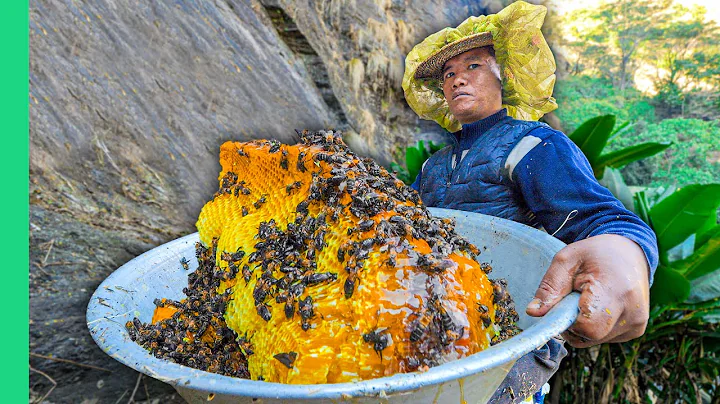Do you often have the illusion that foreigners all look the same?
This phenomenon is also called the "foreign race effect", which means that when a person faces a person of the same race, his visual appearance recognition ability will increase, and vice versa.

Look at these European and American actors, do they look very similar?
However, East Asia is a strange place. Among the various countries in East Asia, the appearance of Indians is often the easiest to identify, followed by the appearance of Filipinos and Thais , which is the most troublesome to foreigners, even What is difficult for Asians themselves to distinguish is the appearance of Chinese, Japanese and Korean people.
Today's article starts with the "bloodline" of the Three Kingdoms, teaching you to distinguish those physical features that are not easy to find, better distinguish Koreans from Japanese, and better identify Chinese compatriots.
"Look at faces" to identify the appearance of Korean men and women. Is the exquisite face natural or depends on surgery?
First of all, the difference between Koreans and Chinese and Japanese people is that Koreans have a certain Tungus bloodline. One of the most striking features is that these people have large faces, and do not have the deep and three-dimensional facial features of Westerners, and their foreheads are large. However, he is short in court, has a soft face, and lacks sharp heroic spirit.

Korean beauties
Just like what we see in the Korean dramas we watch every day, Korean beauties give us the feeling of being delicate and gentle, which is closely related to their blood.

Koreans mainly live in areas with cold climates. In order to adapt to the changing laws of the natural environment, Koreans have superior body proportions. Compared with Chinese and Japanese, Koreans have higher head-to-body ratios and net heights. .
In the Republic of Korea, it can be said that people with long legs are everywhere. But generally speaking, most Koreans have single eyelids and relatively large faces. This appearance of single eyelids and small eyes is a behavior of Tungus people to adapt to cold weather and protect their eyes.

Typical Tungus appearance
Among them, the most common Korean appearance is a mixed race with a certain amount of Tungus and Altai ancestry. Such people generally have larger faces, wider noses, and rather plump lips.
Another bloodline distributed in the Korean Peninsula has an obvious appearance of the Nantonggus people. This bloodline is the Manchu-Korean type that we are familiar with. Descendants who inherit this bloodline have a more feminine appearance, mainly with long and round faces. The base of the nose is not high, and the tip of the nose is relatively pointed. It can be called Small, and the vast majority of groups have upper eyelids that either have shallow wrinkles or no wrinkles at all.
To put it simply, most people have single eyelids. A large number of Korean oppas who fascinate many girls have single eyelids, and the Manchu-Korean bloodline shown on their bodies is very obvious.

Manchurian-Korean appearance
The other type of Tunguska Chinese appearance actually belongs to the southeastern Tungusic appearance, which is widely distributed in Northeast China, the Korean Peninsula, and Honshu, Japan . These areas are greatly influenced by Sinicization. The Mongolian folds are heavier, the face is rounder, the face is flat and wide, the face is not smooth and the hair color is mainly black, with more straight hair. Therefore, Koreans with single eyelids can be easily identified.

The appearance of the Southeast Tungus people
The Korean beauties we usually see with small faces, big eyes, high nose bridges and long legs are obviously not within the control of Korean genes. Of course, such anti-genetic changes are naturally inseparable from technological adjustments. It can be seen from this that the process of becoming beautiful requires enduring the pain of thousands of cuts.
traces the origin of Japan. Are the Japanese descendants of China, or is there another theory?
Whenever we talk about the origin of Japan, we have to mention the incident of Xu Fu's eastward journey to Japan, which is well known to both Chinese and Japanese people. As early as many years ago, there were rumors that the Chinese were the ancestors of the Japanese.
The origin of this statement is folklore.It is said that after Qin Shihuang unified China, in order to find the elixir of immortality to extend his life, he sent Xu Fu to lead 3,000 boys and girls in a huge fleet of 50 ships, and carried crossbows that could kill whales Head east to find the elixir of immortality.

However, after Xu Fu traveled east to Japan, he did not find the legendary elixir that could extend his life. Then, because he was afraid that Qin Shihuang would blame him and lead to death, he did not dare to return to his homeland and chose to live with these 3,000 children. The boys and girls stayed together in Japan to live and reproduce, thus giving birth to the Yamato nation of Japan.

Many people in Japan believe this statement, and traces of Xu Fu can even be found in palaces and temples across Japan. There are various Qiantong seedlings and schools in Cangzhou area.
However, the Chinese do not recognize such "descendants" because genetically speaking, the genes of Vietnamese and Chinese are closer. In the y chromosome sampling of East Asian countries, the chromosomes of Japanese are not different from those of our country. There is an overwhelming o haplotype, and the Japanese have a high frequency of d type. Most of this type is distributed in the Tibetan Plateau and Indian Ocean regions, and is a type of ancient people.

As early as the Pre-Qin period, traces of primitive human habitation appeared on the land of Japan. The Japanese called this period the Jomon period. At that time, the Jomon people accounted for the largest proportion and occupied a large position. According to historical records, the Jomon people have lived in Japan for more than 10,000 years.
Compared with China's diversity and integration, Japan has only one ethnic group. However, although there is only one in number, the Japanese do not have an advantage in terms of blood, because the Yamato nation is actually a mixed nation.

Yamato Nationality
Most of the modern Japanese are actually the descendants of the Jomon people, the indigenous inhabitants of Japan in the primitive period, and the Yayoi people from East Asia. Yayoi people are people who came to Japan from places outside Japan, generally referring to people from China and Korea.
Unlike the rough-and-tumble Jomon people, the Yayoi people have softer looks, slender eyebrows and smoother facial contours. As we all know, in Japan, both men and women are generally shorter in height and have darker skin color. They are not as good as Koreans with fair skin, and not as good as Chinese people who are also yellow-skinned.

Yayyo people
The "dwarf black people" who account for a relatively large proportion in Japan are the descendants of the Jomon people, the local indigenous people who came to Japan from Africa. They have large eyes, deep eye sockets, and high noses and deep eyes.

In other words, Japanese people with mixed-race looks are pure descendants of native Japanese aborigines, and are serious descendants of the Yamato nation. Therefore, pure-blooded Japanese are often mistaken for Indians or even Arabs because of their three-dimensional facial features. It seems that the whole world does not believe that Japan also has "good looks".
Some people in the Middle East, Tibet and the Mediterranean region look quite similar to Japanese people. Their most obvious feature is thick hair, not only hair and eyebrows, but also chest hair, armpit hair and the like.
Based on the quite different mixed-race appearance, short stature, and dark skin among Japanese people, you can judge the potential Japanese in the crowd in all likelihood.
The face of China is diverse and integrated, and culture is injected into the soul from the skin.
Compared with South Korea and Japan, China is obviously different from the two countries. Chinese culture is all-encompassing and can be described as diverse and full of charm.
Such erudition across the world is destined to be different from other countries, especially in terms of ethnic groups. China mainly focuses on diversity and integration. In its five thousand years of history, China has experienced many major population migrations and The great fusion of ethnic groups has formed a total of fifty-six ethnic groups. The fifty-six are quite similar but have their own characteristics, making it difficult for foreign friends to identify them.

Of course, among the many Chinese faces, there are also distinctive and representative appearances.There are relatively common appearances in Inner Mongolia. One is the more typical Tungus race, and the other is the Mongolian Arctic people. The most representative one is the Inuit living in the igloo.
Of course, even Chinese people who belong to the same ethnic group or even the same region will have obvious facial differences, and there will be differences between beauty and ugliness. The Central Asian type of Mongolian appearance is a very handsome type in Mongolia. This type of person has deep facial features, a high nose bridge, and a mixed-race aura.

The modern Sichuan and Chongqing region has a large migrant population, and a large number of people have poured into the Sichuan Basin and important economic areas. They have a short square face, and the face is square and round at the same time. Generally, the eyes are larger. , The face is large, but the cheekbones are not very prominent. It looks like the face is clear, but the bones are not prominent, and there is an indescribable gentleness. Quite blessed, it is the most popular appearance among middle-aged and elderly people in China.

The ancient northwest type can refer to the Qin Terracotta Warriors and Horses that we often talk about. The bones are square and the face is thin and three-dimensional. This type of appearance is more common in our country northern Sichuan and Tibet, while most of the southern Sichuan area are indigenous residents of Sichuan. , so there are obvious traces of the ancient Shu people gene on the face. He looks quite heroic, has clear bones, big ears, square face, high nose bridge and thin lips. It looks like the mask unearthed in Sanxingdui, and is somewhat similar to the appearance of the Tibetan people. place.

Among the many ethnic groups in China, each ethnic group has its own characteristics, but commonalities can always be found in diversity. Regardless of appearance or temperament, in the eyes of many foreigners, they can also "know pearls with a keen eye".
summary
We can start from many aspects to distinguish people from China, Japan and South Korea, but these theoretical knowledge are only helpful for us to identify foreign friends, and cannot play a decisive factor. In other words, based on this knowledge , we may not be able to accurately identify people from China, Japan and South Korea among all living beings.

From left to right: Chinese, Korean, Japanese
After all, appearance, race, and genes are not completely independent and individual existences. This is just like each of us as individuals is different and individual. After five thousand years of migration and reproduction, the facial features of each of us have changed and even merged with our different personalities.





















